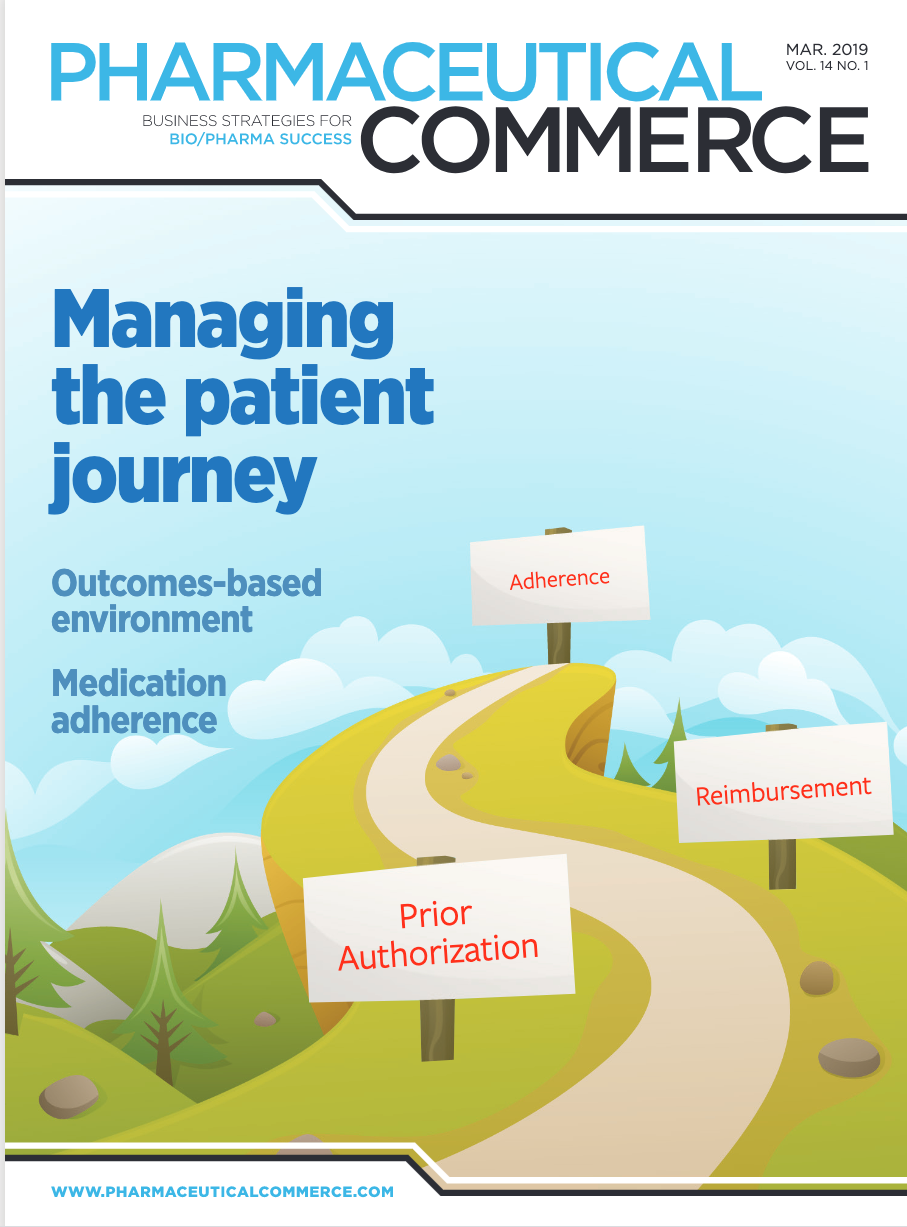The outcomes-based reimbursement environment
A changing role for hubs in collecting critical data, raising adherence

As the US healthcare system continues to shift its reimbursement model from volume-based (fee for service) to value-based (fee for outcome), the landscape for specialty care is becoming increasingly complex. At the same time, a growing number of innovative specialty drugs with novel mechanisms of action are receiving approval from the FDA—typically with small patient populations and high price tags.
At the intersection of the patient’s treatment and reiMany of these therapies promise to deliver significantly better outcomes for patients than existing treatments—but given their costs, they may also face resistance from payers, who are reluctant to reimburse for a product that is still viewed as unproven against less expensive alternatives.
In light of these challenges, more and more drug developers are negotiating outcomes-based reimbursement contracts— also known as risk-sharing contracts—with payers. Through these contracts, the drug is only reimbursed if the patient achieves certain clinical milestones.
According to a recent report from the Common Wealth Fund [1], pharmaceutical companies and payers have engaged in outcomes-based pharmaceutical contracts for more than 25 high-cost, brand-name drugs that treat heart disease, diabetes, osteoporosis, multiple sclerosis, rheumatoid arthritis, hepatitis C and cancer.
One of the first well-publicized examples is Harvard Pilgrim’s 2017 outcomes-based agreement with Spark Therapeutics, for Luxturna, a one-time gene therapy treatment for retinal dystrophy which costs upwards of $850,000.
Per the contract, Spark Therapeutics would measure patient sight improvements at 30- to 90-day intervals, and after 30 months on therapy. The contract calls for the drug’s efficacy to be measured using clinical benchmarks for light sensitivity. If a Luxturna treatment fails, then Harvard Pilgrim would receive a rebate from Spark.
Another high-visibility example involved sacubitril/valsartan (Entresto), a drug introduced by Novartis in 2015 to treat congestive heart failure. Novartis created agreements with multiple payers, including Harvard Pilgrim, Cigna and Aetna, in which it committed to reduce the price of Entresto to payers, if the rate of heart failure hospitalization of patients taking the drug were to exceed a pre-specified threshold. In return, Entresto was given preferred formulary status.
Other well-known examples of outcomes-based contracts include Amgen’s evolocumab (Repatha), a low-density lipoprotein (LDL) cholesterol-lowering drug with a list price of over $14,000 per year, and Eli Lilly & Co.’s GLP-1 drug Trulicity at around $7,500 per year.
Growing accountability for outcomes
As more risk-sharing contracs are adopted, the pharma industry has greater ownership for the outcomes patients achieve when taking their therapies. As a result, pharma companies are looking beyond the first prescription fill and asking how they can help patients strictly adhere to therapies, and how they can support patients in reaching both short-term and long-term clinical outcomes.
That’s where patient services hubs are playing a bigger role. While still evolving, the patient education and adherence support programs managed by hubs have been clinically shown to improve outcomes. In one recent example, a 2017 ISPOR poster presentation [2] delivered by Cardinal Health Specialty Solutions demonstrated that one hub’s implementation of a customized Medication Therapy Management (MTM) compliance program helped drive medication possession rates (MPR) among patients taking an oral oncolytic therapy for leukemia. Among the 144 patients who participated, 62% reported MPRs above 80%, compared to 42% of patients who didn’t receive the MTM intervention from the hub. For the most adherent in the group, 46% reported MPRs above 90%, versus just 28% of patients who did not receive the MTM intervention.
In addition, health care providers recognize the positive impact these services can have on outcomes, when they’re implemented well. In a 2018 study conducted by Cardinal Health Specialty Solutions [3] among 57 medical oncologists/ hematologists, 89% of those surveyed indicated that they agreed that patient support services such as education and adherence programs (including brochures, videos or reminder call programs) can help improve outcomes for patients managing chronic diseases.
In that same study, 38% of respondents said that pharma-sponsored education and adherence programs are essential, although those respondents also indicated that they felt these programs can be highly variable in regard to ease-of-use and effectiveness. The same percentage of respondents indicated that hub services programs, as currently available, would need to be significantly improved in order to be valuable. Not
surprisingly, these results indicate that the patient services hubs that are able to make their programs clinically beneficial for patients and those that demonstrate the most consistent ability to support improved patient outcomes, are the most likely to earn traction in the market.
The role of the hubAs risk-based contracts become more common, many pharma companies are looking to their patient services hubs to play a significant role in helping patients achieve the clinical milestones, and in collecting data to support the fulfillment of the contract. Below are three ways hubs are changing in the era of value-based care.
Delivering more frequent patient follow upHistorically, it has been difficult for the pharma industry to track patients taking their medicines because they have had limited
access to patient data. With the emergence of outcomes-based contracts, tracking patients has become a requirement for reimbursement—and drug companies are leaning on their hubs to drive these efforts. Hubs are being asked to provide clinical support services to patients at 30, 60 and 90 day-intervals following the initial prescription fill to provide education and adherence support. It’s this more frequent contact that enables outcomes data to be more frequently be collected and reported in aggregate back to the payer.
In the effort to collect more complete patient data, hubs are also being asked to look beyond pharmacy dispensing data, which—by itself—can paint an incomplete picture of patient persistency. Simple changes like a patient filling a prescription at another pharmacy can result in lost compliance data – and when value-based contracts are involved, that lost data can directly lead to lost reimbursement dollars. Additionally, approximately 20% of Americans change insurance plans annually, which can also lead to disruption in data collection. Tracking patients as they switch pharmacies and plans requires the kind of tailored approach hubs specialize in. By reaching out directly to patients, hubs can help pharma companies to close the data gaps and better identify when patients are at risk of falling off therapy.
Focusing on data and resultsThe collection of patient data is key to the successful implementation of outcomes-based contracts—and hubs are ideally positioned to collect it. Beyond simply documenting whether a patient is still taking their medication, hubs can collect information on disease-specific and general quality-of-life details, patient satisfaction scores, disease symptoms, adverse events, depression scores and other measurements for a health utilities index. Today, many hubs can also incorporate lab and diagnostic test results into their patient databases, enabling pharma companies to construct a more complete picture of the patient experience.
Having a robust data management system is key to the hub’s ability to support outcomes-based contracts, particularly as each contract is different and may require unique data sets. Clarifying the actual data stipulations is critical before embarking on a new outcomes-based contract. Not only is it important to determine which outcomes will be tracked, it’s also imperative to consider factors such as how long patients will be followed, where the data be stored, who can access the data and how the data will be analyzed.
Selecting a hub services provider that focuses the team on outcomes and data gathering is another important consideration. Using a quality assurance (QA) tool that monitors how successfully hub teams track results and engage patients reinforces the importance of such initiatives. A strong collaboration between QA and Training further cements the value each hub brings to the process.
Encouraging deeper patient engagementGenerally speaking, patients engaged in their own healthcare are more compliant, and compliant patients experience better outcomes. As risk-based contracts become more prevalent, keeping patients engaged in managing their own health continues to become more important. While healthcare providers including pharmacists, physicians, nurse practitioners and nurses play a central role in answering patient questions and providing education, hubs are increasingly able to support patient engagement by leveraging their clinical teams to conduct proactive patient outreach and provide informed responses to incoming patient questions.
With medications that can cost six digits for a single dose, the financial stakes in value-based contracts are high – and all players in the healthcare system are eager to see rapid results.
Patient services hubs—with their primary focus on patient support—are well positioned to develop user-friendly, effective processes for providing patient education and support services that drive compliance and effectively leverage the mountains of patient data that is collected in the process.
REFERENCES
- https://www.commonwealthfund.org/publications/issue-briefs/2017/sep/outcomes-based-pharmaceutical-contracts-answer-high-us-drug
- https://www.cardinalhealth.com/content/dam/corp/email/ documents/2019/2019_02/cardinalhealth-oral-oncolytic-adherence.pdf
- The Impact of Patient-Centered Care in Community Oncology Practice, November 2018, Cardinal Health Specialty Solutions
ABOUT THE AUTHOR
Tara Herington is VP of Cardinal Health Sonexus™ Access and Patient Support where she provides strategic direction on hub offerings to address business challenges and drive improved patient access. She began her career as a registered nurse and transitioned to the pharmaceutical industry, leading patient services, reimbursement and copay support
Newron, Myung In Pharm Form Partnership Centered Around Treating Schizophrenia in South Korea
January 14th 2025The license agreement will feature an upcoming Phase III trial and—depending on results—the development, manufacturing, and commercialization of evenamide as a potential treatment option.
